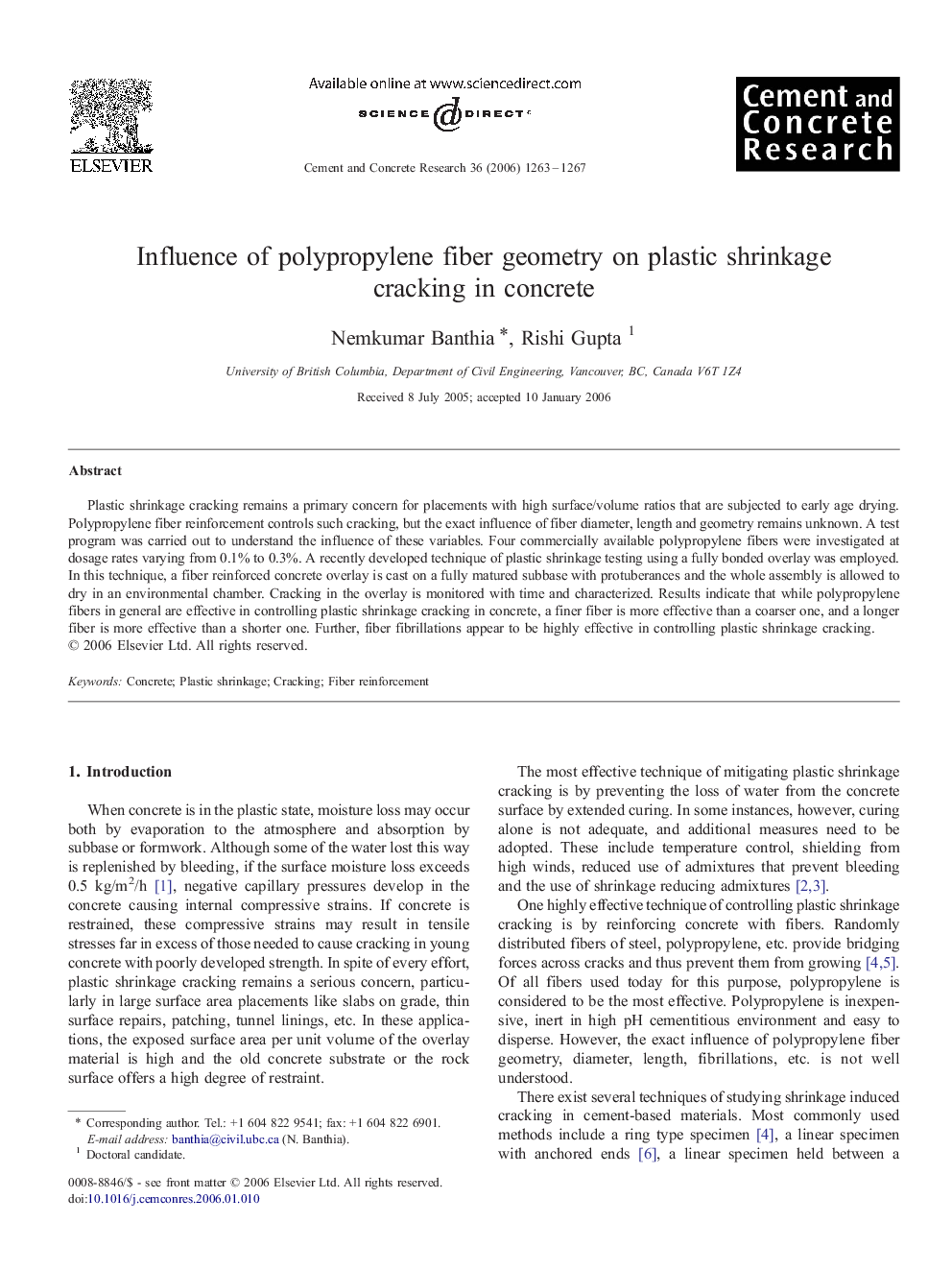| Article ID | Journal | Published Year | Pages | File Type |
|---|---|---|---|---|
| 1458110 | Cement and Concrete Research | 2006 | 5 Pages |
Plastic shrinkage cracking remains a primary concern for placements with high surface/volume ratios that are subjected to early age drying. Polypropylene fiber reinforcement controls such cracking, but the exact influence of fiber diameter, length and geometry remains unknown. A test program was carried out to understand the influence of these variables. Four commercially available polypropylene fibers were investigated at dosage rates varying from 0.1% to 0.3%. A recently developed technique of plastic shrinkage testing using a fully bonded overlay was employed. In this technique, a fiber reinforced concrete overlay is cast on a fully matured subbase with protuberances and the whole assembly is allowed to dry in an environmental chamber. Cracking in the overlay is monitored with time and characterized. Results indicate that while polypropylene fibers in general are effective in controlling plastic shrinkage cracking in concrete, a finer fiber is more effective than a coarser one, and a longer fiber is more effective than a shorter one. Further, fiber fibrillations appear to be highly effective in controlling plastic shrinkage cracking.
